|
MOON PHASES:

Tonight's Moon phase
(Image courtesy of
U.S. Naval Observatory).
(Click on the image to get the Moon phase for any day).
Let's start with some basics. The Earth orbits the Sun while the Moon orbits the Earth. The Earth also rotates about
its axis once every 24 hours making an Earth day 24 hours long. The Moon also rotates about its axis. However, due to
gravity, the Moon's rotation is such that the same side of the Moon always points towards Earth. Since the Moon orbits
the Earth approximately once every 28 days and since the same side of the Moon always points towards Earth, the Moon
only rotates once every 28 days. Meaning a Moon day is actually 28 Earth days long!
What causes the phases of the Moon?
Remember that the Moon orbits the Earth once every 28 days. So, every night the moon is in a slightly different place
from where it was the night before. Since the Sun does not change its position (it is at the center of the solar
system after all). The part of the Moon facing the Sun (where it is daytime on the Moon) slowly changes from night to
night.
Since the Sun will only light up the sides of the Earth and Moon that are facing the Sun, the sides that are not
facing the Sun will be very dark. So, From a spaceship flying above the solar system, it would look something like this:
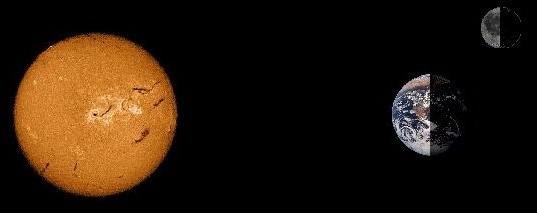
Space view looking down on the north pole. Earth rotates CCW, Moon orbits CCW.
To make things easier, I put a stick figure on the dark side of the Earth (where it is night) which will represent us
looking at the Moon:
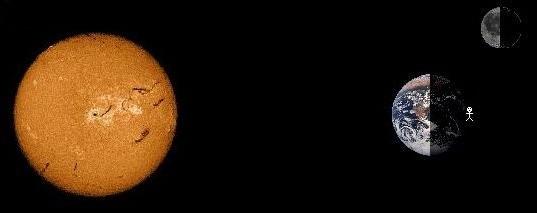
Space view with sick figure.
Let's look at 4 of the phases of the Moon starting with a New Moon. During a New Moon the Moon is on the same side
that the Sun is. So, we can only see the dark side of the Moon. However, since the dark side is very dark it
looks like there is no Moon at all. So remember "New Moon means dark Moon."
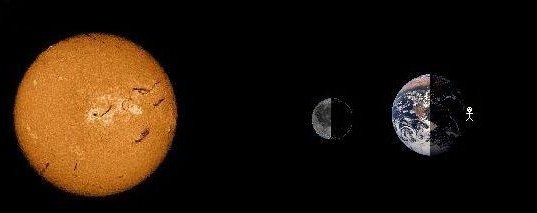
Space view of New Moon.

New Moon as seen from Earth.
During a First Quarter phase the Moon has moved along side the Earth and we can now see the lighted side of the
Moon that is facing the Earth (remember the dark side of the Moon is too dark to see). Since the lighted side is
always only half of the Moon and since we can only see half of the lighted side, this is called the First Quarter
(First Quarter the New Moon).
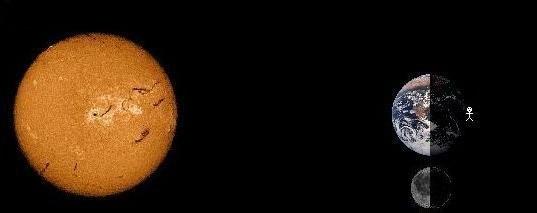
Space view of First Quarter
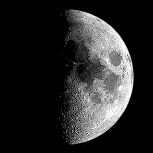
First Quarter as seen from Earth.
During a Full Moon the Moon is on the same side of the Earth as we are. So, we can now see the entire lighted side of
the Moon.
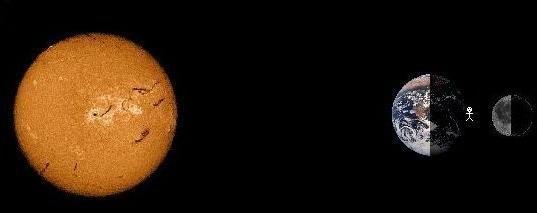
Space view of Full Moon
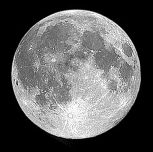
Full Moon as seen from Earth.
During a Last Quarter phase the Moon has moved along side Earth's other side and we can once again only see half of
the lighted side of the Moon. Therefore, this phase is called the Last Quarter (Last Quarter the New Moon).
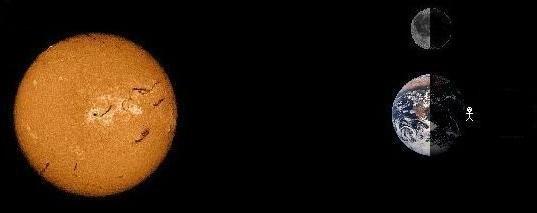
Space view of Last Quarter
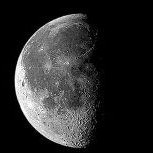
Last Quarter as seen from Earth.
In actuality there are 8 phases and night by night the Moon slowly moves from 1 phase to another phase over the 28
day cycles. Thus, it takes about 4 days for the Moon to change from 1 phase to another.
The movie below shows the phases of the Moon. Note that the moon wobbles and changes size. This is because the Moon's
orbit around the Earth is not a circle and at times the Moon is close to the Earth and at other times farther away
from the Earth (see the section below on solar eclipses for more details).

Moon phases showing affects of Perigee and Apogee.
(Movie courtesy of
U.S. Naval
Observatory).
A Moon phase animator.
(Script used by permission, Chris Dolan / modifications by Ron
Marsh).
(Requires Java).
To summarize, the phases of the Moon are caused by the Sun only lighting up half of the Moon and our angle of
seeing the Moon.
The phases of the Moon are not caused by the Earth's shadow.
|







